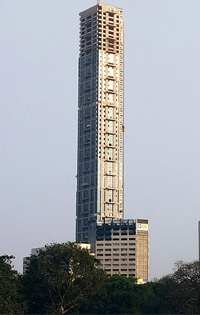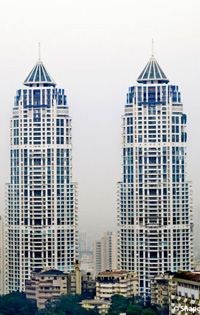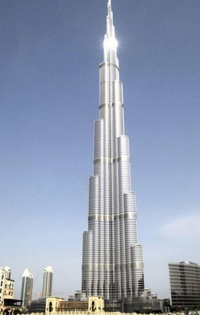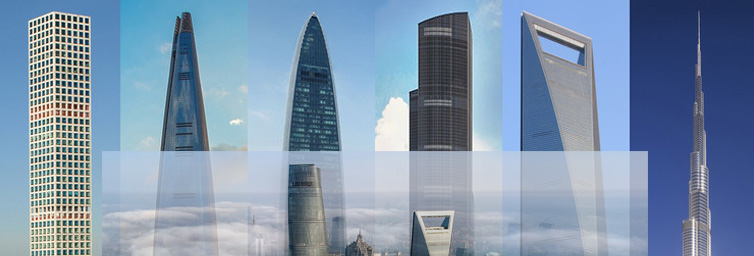You have no items in your shopping cart.
Post Requirement
Increase in the land costs and demand to satisfy large population in urban cities have made a door for the construction of tall buildings, generally known as Multi-storeyed buildings.
Nowadays multi-storeyed buildings have become essential and inevitable in urban cities. Buildings with more than five stories are called multi-storey buildings, and mostly tall buildings in cities have five to twelve stories. However, in metro cities like Kolkata, Delhi, Mumbai, Chennai and Hyderabad, 30 to 45 storey structures have started developing.

The tallest building in India located in Kolkata of 268 metres (879 ft).
Construction of Tall Buildings
The primary factors which are to be considered in the construction of RCC tall buildings are provided below:
- RCC frames are monolithic (uniform) construction of beams, columns and slabs. Because of monolithic configuration, deflection and bending moments are reduced which results in an economical construction and also ensures a further adequate safety of the building.
- The RCC frames primarily consist of beams, columns and slabs for floors or roofs. In case of large spans for better distribution of load, secondary beams spanning across main beams can be added.
- The concreting method is the same as for other structures but, a sequential approach has to be followed. Here the formworks for various segments to be cast are first installed or assembled in position. Required reinforcement is then placed and concreted, and formwork is removed after the concrete has achieved enough strength.
- The general series is the construction of columns followed by beams, cross beams and slabs collectively.
- The whole construction cannot be done in one time, so the construction joints are required to be provided at intervals. Moreover, in framed construction, the joints should be at the point of smallest shear.
- The height of the columns is concreted to give proper lap with the sides of the beams and columns in uppermost storeys.

The second tallest building in India located in Mumbai of 256 metres (840 ft).
Advantages of Tall Buildings
Following are the advantages of Tall Buildings:
- Provides room for a large proportion of open space for creating natural surroundings.
- The economy in a profit of less land for construction.
- Permits better day-lighting and greater flow of air.
- Presents a pleasant panoramic view of the city.
- Floors above the ground provide freedom from street noises.
- Provides facilities like common recreation centres, park, car parking, swimming pool, etc.

The tallest building in the world located in Dubai of 828 metres (2,717 ft).
Disadvantages of Tall Buildings
Following are the disadvantages of Tall Buildings:
- More number of people residing in a small area.
- Difficulty in preventing congestion.
- Possesses a number of human and social problems.
- Due to the excessive population, there is an imbalance load on municipal services like water supply, sewage, electricity, etc.
- Difficult to prevent accidents due to fire, earthquake disasters, etc.
Check Out: Glass for Buildings - Uses and Properties
Vani Paspula













